How to Make and Teach with Bilingual Cardboard Shape Templates
Since I’m trying to raise my children bilingual in Chinese and English, I try to include both languages in our home activities. When my children were younger, I made bilingual shape templates from recycled cardboard! The cardboard shape templates are still used by my children frequently for arts and crafts. They’ve been a simple tool to teach my children to shape names in Chinese and English.

Chalk Academy is reader-supported. Some of the links are affiliate links. When you buy something through an affiliate link, we may earn a very small commission at no additional cost to you. More details here.
Bilingual cardboard shape templates: an idea created from need
I made these bilingual cardboard shape templates when my daughter was 3 years old. When we misplaced our store-bought shape stencils, my daughter was frustrated that she could not draw perfect shapes for her drawings.
In a pinch, I grabbed a piece of cardboard and cut out some shapes for her. Then I realized that the blank cardboard pieces had a precious spot for adding labels to create a print-rich environment in Chinese and English! I made 2 sets of each shape: one set of Chinese names, another set in English.
Encourage the minority language through print exposure
Since our home is the only place my children are exposed to Chinese language, I try to make it stand out in a fun and meaningful way. When we see Chinese characters around the house, it reminds our family to speak the minority language.
As for reading, these DIY shape stencils can gradually teach kids English and Chinese words! While drawing and tracing, your child is naturally looking at the bilingual labels since the holding the stencil in place requires eye-hand coordination. They might not remember them right away, but over time, the English letters and Chinese characters become familiar with frequent exposure.
Explore this: How I Taught My Child 1000 Chinese Characters as a Non-Fluent Speaker
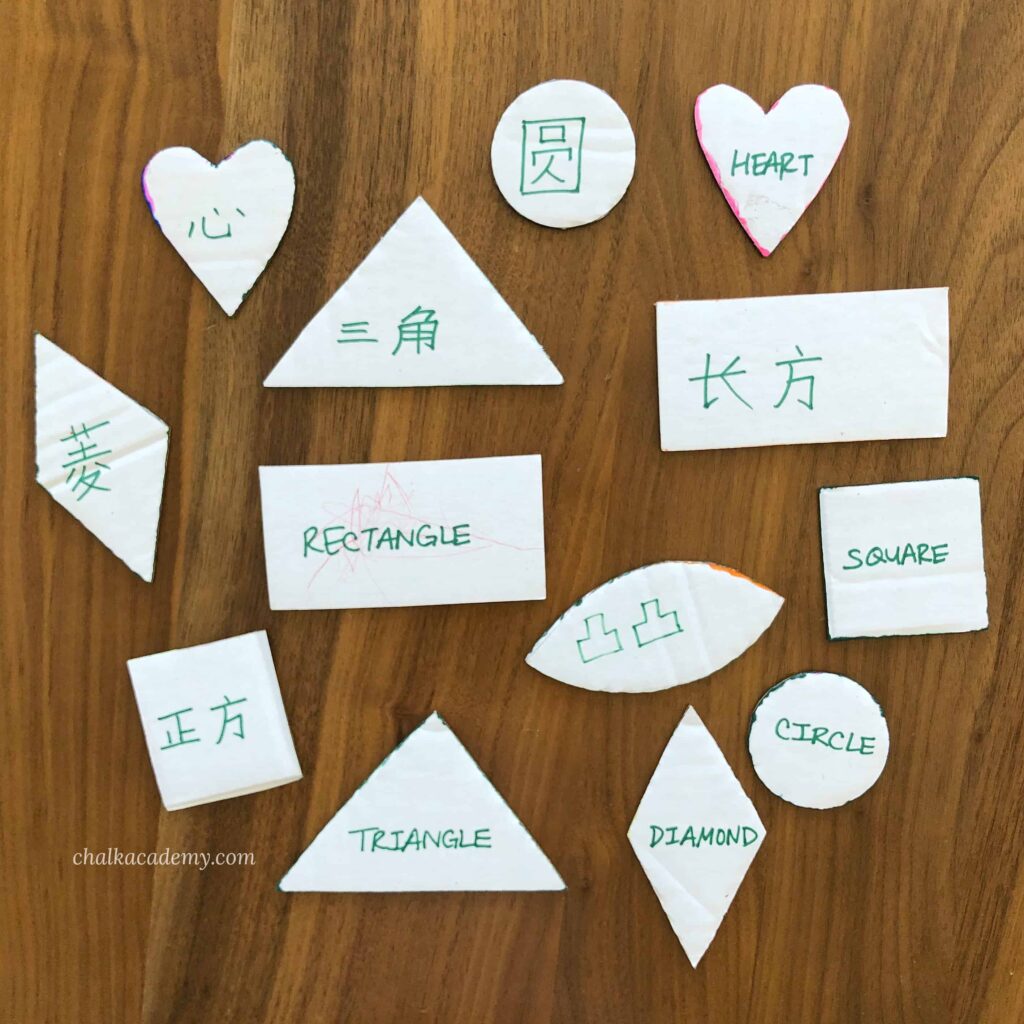
Important vocabulary: shape names in Chinese and English
- 形状 / 形狀 (xíngzhuàng / shapes)
- 圆形 / 圓形 (yuán xíng circle)
- 三角形 (sānjiǎoxíng / triangle)
- 正方形 (zhèngfāngxíng / square)
- 长方形 / 長方形 (chángfāngxíng / rectangle)
- 心形 (xīn xíng / heart)
- 星形 (xīng xíng / star)
- 菱形 (língxíng / diamond)
Bilingual cardboard shape stencils: What you need
- Cardboard
- Sharpie marker
- Shape template (feels kind of silly to use a template to DIY your own, but it’ll be easier that drawing them freehand like what I had to do!)
- Scissors
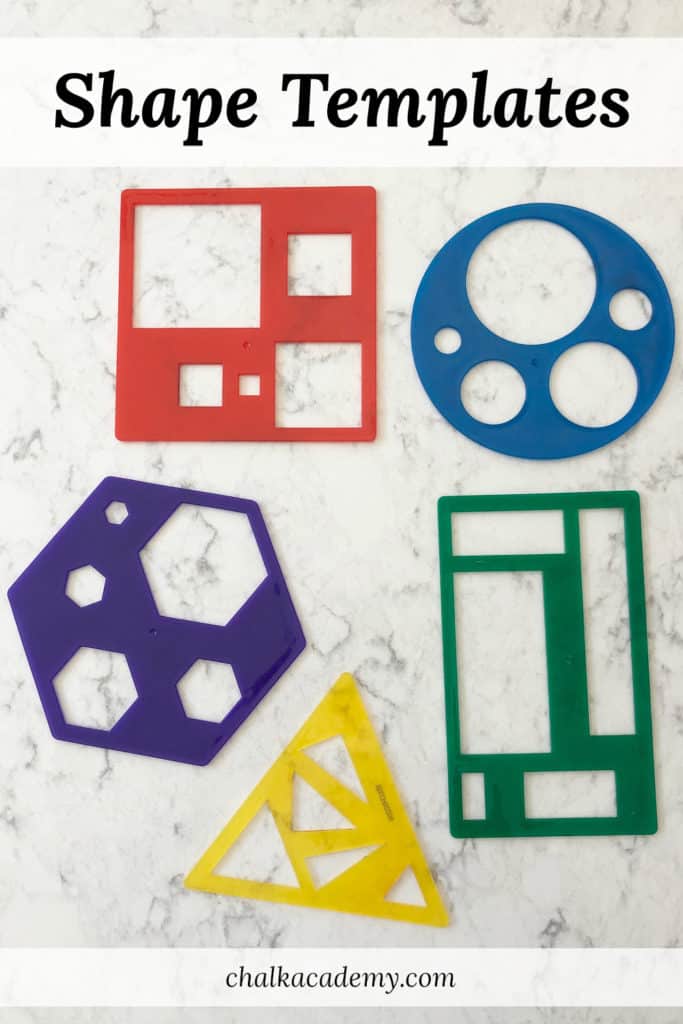
Bilingual shape templates: how to make them
- Draw shapes on cardboard
- Cut shapes
- Label shapes with their names.
- Use the stencils to trace/draw
- Suggest creating 2 sets so that you can also turn it into a matching game!

I showed my daughter how to trace the first shape at the corner of the cardboard.
By starting from the corner, we can maximize the cardboard piece and create more shapes!
Tips for teaching with cardboard shape stencils
- Use the same color for each label for uniformity. Labels that are too colorful are distracting from the goal of recognizing the shape and their name.
- Make sure each cardboard shape is the same color. This allows the child to visually focus on discriminating the shapes.
- Show your child how to feel the edges of shapes. Discuss which shapes have pointy corners, how many sides, etc.
Bilingual shape templates: candid photos
Here is a photo of my daughter when she was 3 years old. At this age, she had a lot of fun tracing all of the cardboard shape templates!
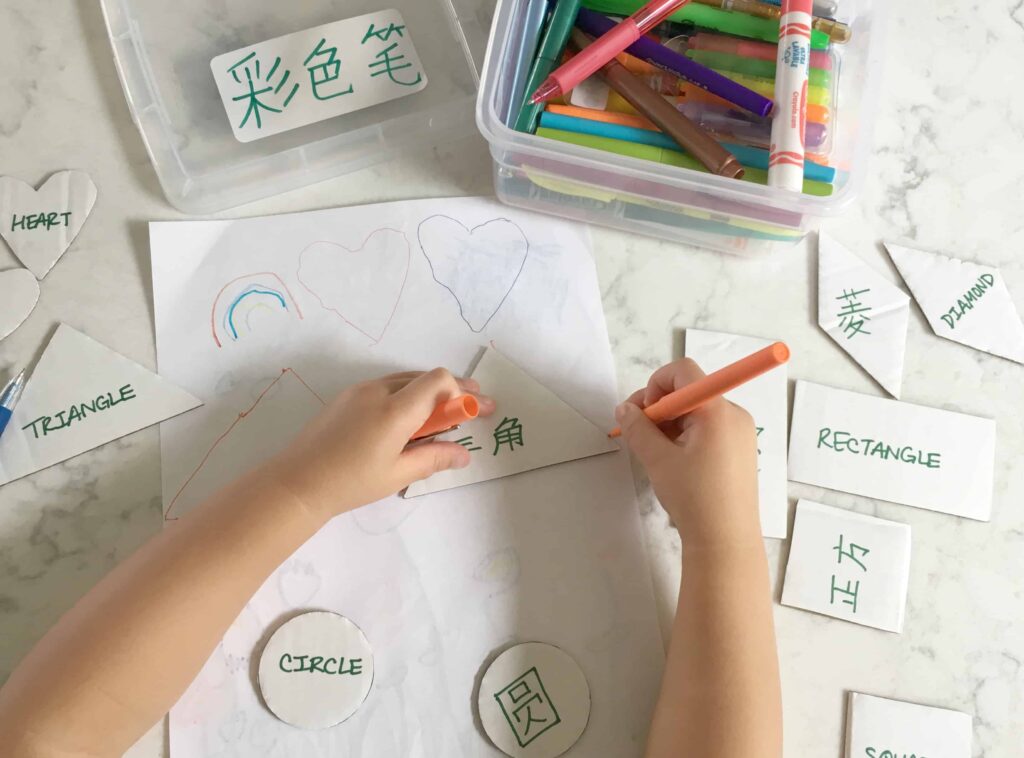
Through frequent print exposure, she easily learned how to read Chinese and English shape names.
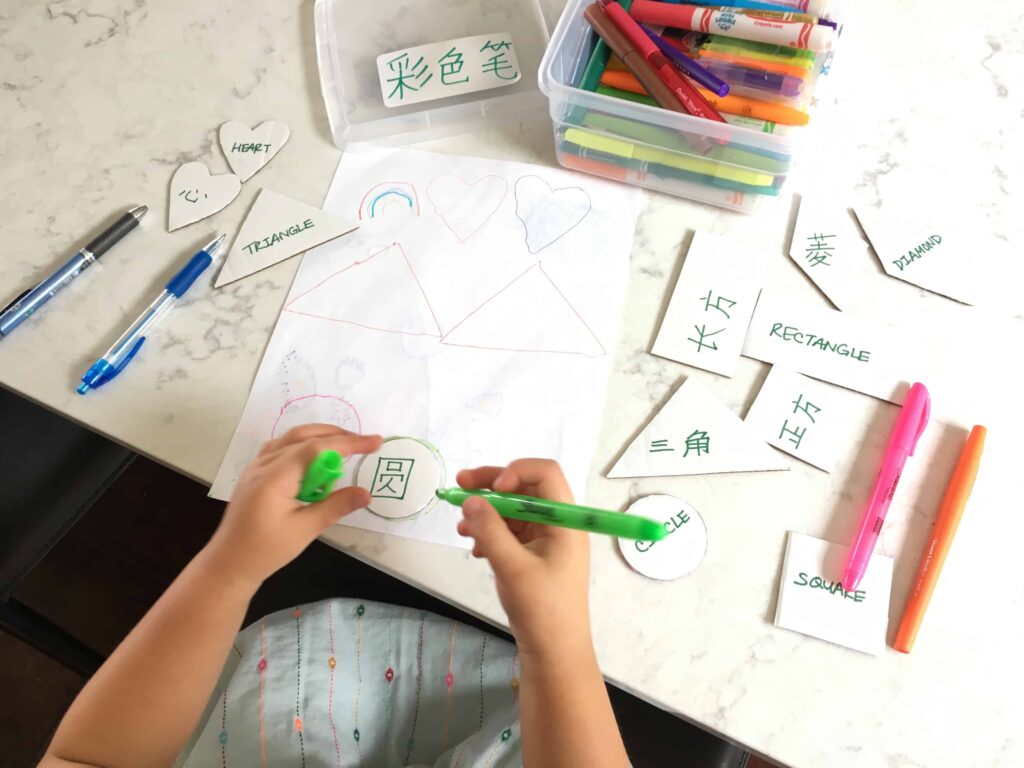
If you make bilingual shape stencils, let us know! Please leave a comment below.
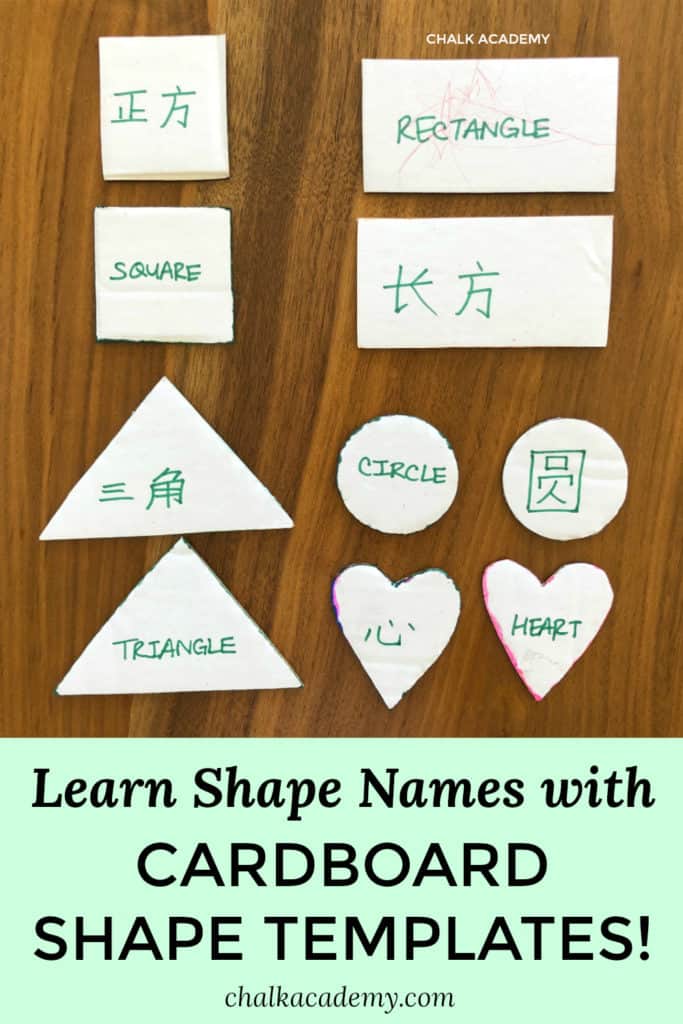
Tips on creating a bilingual learning environment at home
- Teach Your Child a Second Language at Home with 5 Key Steps
- Raising Multilingual Children as a Non-Fluent Parent is Possible
- How to Find a Language Teacher for Your Child